The Evolution of Eco-Friendly Packaging


By Shelagh Hammer
Packaging is everywhere: on our grocery shelves, our shipments, covering our gifts and cosmetics, and even surrounding our children’s toys. There is no way to avoid packaging in modern society and yet, with today’s environmental concerns, reducing waste and energy usage while increasing overall product sustainability should be top priority.
We all know climate change is a daunting reality. To avoid it, we need to re-evaluate our nonrenewable resource usage and come up with better ways for businesses to create less waste and consume less energy. While we might assume that packaging manufacturers would be some of the worst violators of the environmental cause, in fact there have been a variety of steps forward in the industry which has helped make it a prime example of how to adapt business practices to become environmentally sustainable.
Sustainable materials
When we think packaging, we think cardboard boxes, plastic, bubble wrap, Styrofoam and other less-than-sustainable materials. However, with the onset of increased environmental awareness, the situation has drastically changed.
Today, you can find a myriad of eco-friendly packaging materials. Such materials include recycled tape, bamboo, boxes made out of post-consumer waste (i.e. recycled newspapers), Geami paper and even mushroom stems (to replace packing peanuts). By using such products, packaging becomes recyclable, reusable or biodegradable -- which, in turn, significantly reduces the amount of waste found in landfills.
Waste reduction
Anyone who has experience in the packaging and manufacturing industry knows the amount of waste produced throughout the finishing process is generally quite extensive. The main reason for this is the presses use an immense amount of paper, not all of which is necessary for actually producing the final package. As a result, the excess paper becomes scrap that is simply tossed.
'Ganging' print jobs is a great solution not only for saving money, but also for reducing paper waste in package manufacturing. This particular strategy uses one sheet of cardboard for multiple projects in order to conserve materials. Of course, to perform such jobs easily, manufacturers need flexible finishing machines which allow them to optimize material use and get the most out of their inputs. Since not all machines are capable of such endeavors, it is best to research advanced finishing solutions to find one that best suits these needs.
Energy conservation
For the most part, we all think of packaging waste in the form of paper and cardboard; however, other than these raw materials, there are other areas of packaging that could potentially create damaging environmental conditions. In addition to paper, plastic, and cardboard waste, energy consumption is also a key concern of packaging professionals. Since many of their clients want customized packaging solutions which incorporate various shapes and textures, they need to go through an extensive, complicated process, using multiple machines to produce samples as well as a tool or die for final production. Of course, dealing with such extensive mechanical processes wastes tremendous amounts of energy, which should be easily avoidable if modern solutions are in place. In addition, the fact that such processes must be outsourced means there is more waste being released into the environment as a result of transporting the product from one place to another.
To solve this issue, the industry has moved in the direction of digital finishing. Such machines automatically create a sample then uses it to complete the rest of the production process. This greatly reduces the steps needed for finishing and lessens the amount of energy wasted per package.
A growing number of people today expect better ethical standards from large corporations. One area where this is particularly influential is in the realm of environmentalism. Fortunately, with increased awareness of global warming, consumers are able to push businesses forward to accept sustainable practices and hold greater accountability for the waste they produce. The packaging industry, though directly involved with potentially harmful materials, has responded impressively to the predicament, coming up with new solutions to make packaging less wasteful in terms of both the manufacturing process as well as materials used. Through the use of sustainable materials and modern finishing technology, packaging is moving forward to reduce humanity’s carbon footprint one step at a time.
Image credit: Stock image
Shelagh Hammer is Marketing Manager for Highcon, the experts in digital finishing solutions. Their Euclid printer is the first of its kind to digitally cut and crease paper, labels, cardboard and microflute easily and efficiently--making designing high quality, customizable packaging easier, quicker, and more cost-effective than ever before.
With over 30 years experience in Marketing for the printing arena at companies such as Scitex (where she spent 19 years), followed by VP Marketing roles at Emblaze Systems (streaming video over cell phones), RiT Technologies (intelligent infrastructure management) and Press-sense – web-to-print solutions, Shelagh has developed advance expertise in the printing and finishing industry.
Hotel group shows no reservations over water stewardship


Leading hotel company InterContinental Hotels Group (IHG) is to partner with the Water Footprint Network, to develop a worldwide water stewardship programme.
IHG says the partnership will develop a deep understanding of its water usage at a local level, applying best practice techniques and behaviours to manage and reduce its water footprint. The collaboration will build on the strong progress IHG says it is already making to reduce water consumption per occupied room in water-stressed areas, one of the company’s 2013-2017 corporate responsibility targets.
Ruth Mathews, executive director, Water Footprint Network, commented: “IHG’s global scale gives us an opportunity to make both a broad and positive impact, as well as to inspire the millions of people and guests that work and stay in IHG’s hotels.”
IHG helps its hotels to manage freshwater usage through the company’s online environmental sustainability tool, IHG Green Engage system.
In addition to water, the system gives hotels the ability to track how much carbon, and energy they are using, as well as to assess how waste is managed. IHG’s global estate of more than 4,900 hotels is enrolled, giving them access to more than 200 specific actions – or ‘Green Solutions’ – designed to reduce hotels’ environmental impact.
There are nearly 30 Green Solutions devoted to water use. These include the ability to track consumption on a monthly basis, as well as guidance on more specific water-saving solutions such as metering, rainwater harvesting, and the installation of devices such as low-flow taps and showerheads.
3p Weekend: One-for-One Brands That Help You Vote With Your Dollar
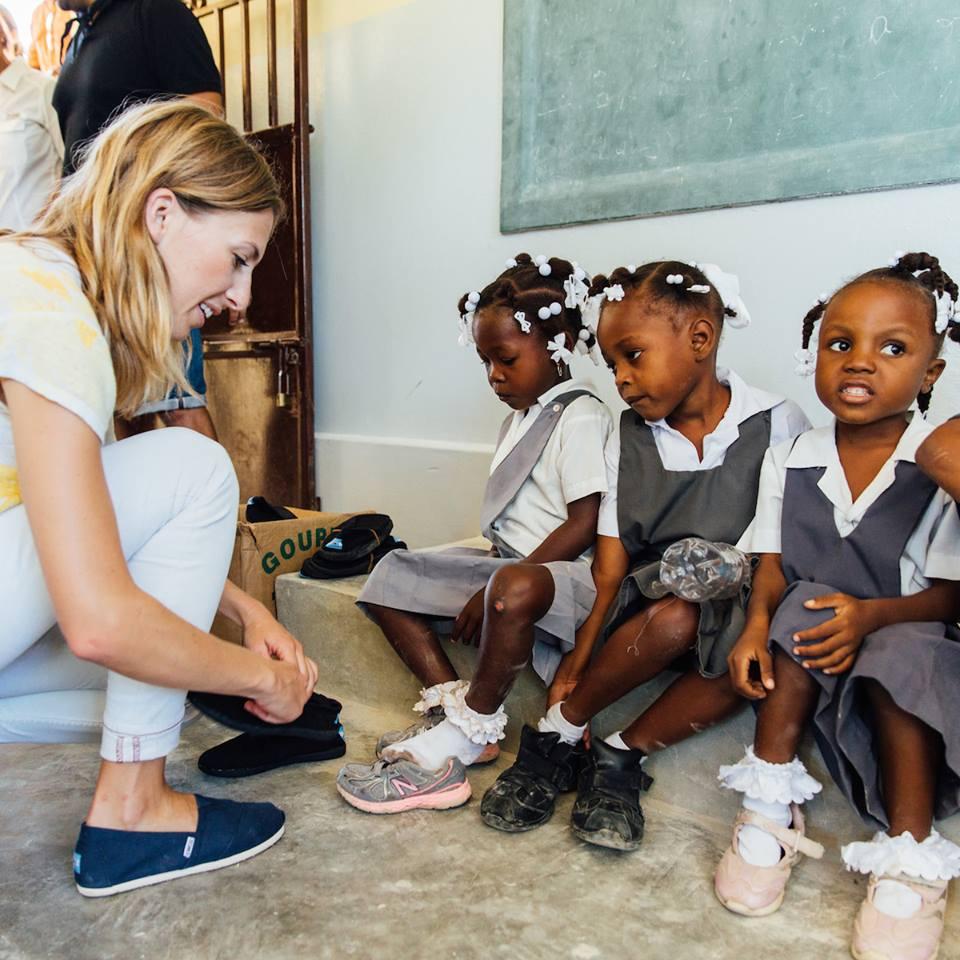

With a busy week behind you and the weekend within reach, there’s no shame in taking things a bit easy on Friday afternoon. With this in mind, every Friday TriplePundit will give you a fun, easy read on a topic you care about. So, take a break from those endless email threads and spend five minutes catching up on the latest trends in sustainability and business.
The one-for-one business model -- in which a brand donates an item to someone in need for each item sold -- is gaining in popularity among socially-conscious, for-profit companies. For consumers, shopping with one-for-one brands is the perfect way to make an impact with every purchase.
So, the next time you need to swap your toothbrush, buy a new pair of shoes or are craving a night out on the town, look to these one-for-one brands to make a difference at the same time.
1. Toms
Best known for its stylish slip-on shoes, Toms is a pioneer of the one-for-one giving model and has only increased its impact over the years.
The brand started by giving a pair of shoes to a child in need for every pair purchased by one of its customers. It has since expanded its one-for-one model to glasses, providing a pair of corrective lenses to someone in need every time a customer buys a pair of Toms' trendy sunglasses. The company also gives access to safe water through its one-off coffee brand, Toms Roasting Co. Customers can also help expecting mothers get the medical attention they need through the purchase of a Toms bag, or give students the gift of education with the purchase of a backpack.
Not satisfied with all of that impact, Toms has since moved beyond the one-for-one model. The company helps new social enterprises get their start with its socially conscious online store, Toms Marketplace, and invests in vital programs around the world that improve healthcare and reduce poverty.
2. Warby Parker
Warby Parker enjoys something of a cult following, largely thanks to its socially -conscious mission statement and one-for-one business model. Warby Parker customers can browse frames for their prescription lenses online and even choose five pairs of glasses to try on at home. Once they find that perfect pair, they get the added bonus of knowing another pair of glasses will be sent to someone in need. The company has distributed over a million pairs of glasses since its one-for-one program began.3. Bombas
Learning that socks are the most requested items in homeless shelters was the catalyst that inspired David Heath and Randy Goldberg to found Bombas, a New York City-based sock company based on the one-for-one model.
Its collection of men’s and women’s socks, which was launched in 2013 after a successful Indiegogo campaign, is built for athletic performance. And for every pair purchased, Bombas gives a new pair to Hannah’s Socks, an Ohio-based nonprofit that donates socks to local homeless shelters. Nearly 400,000 pairs of socks have been donated to date.
4. Kno Clothing
Kno Clothing sells trendy duds for men and women made from fairly-traded, organic fabrics. And when you buy a shirt for your back, you can help put one on someone else's, too. For every item purchased, the company donates an article of clothing to someone experiencing homelessness in the U.S.
5. Roma Boots
Looking for a stylish new pair of rain boots? Check out Roma Boots, and shop with a purpose. With a one-for-one model similar to Toms, Roma gives back to children in need with every purchase. For each pair of boots its customers purchase, Roma sends a new pair of boots stuffed with school supplies to a child in need.
Additionally, 10 percent of all sales proceeds go to the Roma For All Foundation, which helps provide education and poverty solutions to children around the world.
6. Smile Squared
Toothbrushes are one of those items that you'll continue to buy for life (at least we hope). So, why not buy a toothbrush with a purpose. As its name implies, Smile Squared gives a toothbrush to a child in need for every toothbrush purchased on its site or in stores. Its initial goal is to donate a million toothbrushes to children around the world.
7. MealShare
This innovative take on the one-for-one giving model lets you feed someone in need when you dine out. Hungry customers can search for a MealShare partner restaurant online. When they find one that suits their fancy, they can head down and order a MealShare menu item -- and MealShare will provide a meal to someone in need. Giving back simply by enjoying a night out? Sounds like a win to us.
Image credit: Toms via Facebook
The Political Balancing Game: Obama Okays Arctic Drilling


Think of it as a huge game of pick-up-sticks. While I know this is dating me horribly, the analogy of that archaic game of 'grab the most while destroying the least along the way' seems about right for President Barack Obama's recent decision to give a go-ahead to Arctic drilling.
On Monday, the Obama administration gave the final okay to Royal Dutch Shell Oil's application to drill under the Chukchi Sea. From the start, the project has been plagued with problems, including the stupendous loss of its $400 million containment dome from an electrical mishap and the scrapping of an earlier oil rig and tow vessel in stormy seas. The losses were later summarized in a Coast Guard investigation as evidence of "inadequate assessment and management of risks." Former Secretary of Interior Kenneth Salazar put it even more bluntly: "Shell screwed up."
Many have tried to extrapolate the reason why the president, who has said things like, “climate change can no longer be denied ..." and Bristol Bay is "something that is too precious for us to just be putting out to the highest bidder," could authorize drilling in the Arctic. Granted, the Chukchi Sea isn't Bristol Bay, but the constraints that have been placed on Arctic drilling seem to suggest that the administration knows there is as much to lose environmentally from an accident in Chukchi Sea as there is in Bristol Bay.
Of course, the real conundrum is how the administration could ever figure that Arctic drilling could be seen as complementing its policies on climate change.
When trying to answer the unanswerable, it's best to consider the climate forces that drive human ambition.
The Arctic is, in its present state, a huge pizza of geopolitical interests. There's Canada, which of course has had its section of the Arctic for ages -- at least since 1967. Petroleum development is a prime consideration in its 5 percent ownership of the Arctic. Greenland and Norway, with their 11 and 12 percent stakes respectively, have for years been driven by natural gas exploration. But it is Russia, with its expansive gas exploration, that owns the heap of the pile -- with 52 percent of the Arctic's assessed resources. The U.S., though second, has determined interests in its 20 percent of the Arctic's rich but elusive wealth.
It was no different when explorers first set out for the North Pole. Reaching that inaccessibly frozen frontier of waterways and passages was as much a matter of political ambition as it was commercial enterprise. The country that "owned" the most successful passage through the Far North claimed the hill. In this case, the U.S. will never appear to own more than Russia, but a chess game isn't governed by submission. It's won by strategy, luck and bluffing.
But to return to my antiquated pick-up-stick analogy: The problem that always seemed to be overlooked was the final outcome -- the fact that demise was always inevitable in a collective, competitive pursuit of the biggest resources. Eventually, that ecological pile of sticks was due to fall. The prize went to the player who didn't rattle the pile, who got out first. But from an environmental standpoint, everyone lost. The harvest for the most and the best was finished.
The question, as I see it, is: How can we expect other countries to take environmental issues seriously if we don't set that example? And just as importantly, on the eve of another difficult and divisive election, how do we expect American voters to take the call to protect the environment seriously if the administration that set the highest bar yet on environmental protection feels that joining in the race for elusive oil reserves is still setting the highest possible standards?
Images: Chukchi Sea - NASA Goddard Space Flight Center; Pick up sticks - Bananaana04; Canadian ice breaker - Tatiana Pichugina
What Malcolm Gladwell Misses with Millennials, Trust and the Sharing Economy


Last month in a keynote speech, Malcolm Gladwell presented an interesting paradox: Why are levels of trust among Millennials at all time low while services based on trust, like Airbnb and Uber, are flourishing?
Gladwell suggested two possible explanations – either the mechanisms generating trust in sharing economy platforms aren’t that strong as we think they are, or Millennials just don’t tell the truth in surveys.
He then goes on to explain that you need to look not at the data, but at the context. In this case, Gladwell says the right context is the impressive decrease in crime in the U.S., which gets young people to be more trustful of people. Therefore he believes the second explanation is the right one - Millennials are just bullshiting (aka not saying the truth) when asked about trusting others in surveys.
I believe Gladwell could be wrong. There is actually a third explanation he ignores, which could better explain this paradox.
First, why this paradox is important? “It strikes me that you kind have to make sense of this paradox because unless you do, you have no idea whether the business models behind these new companies in the trust economy are real. If it is in fact true that Millennials don’t trust anyone or anything then Airbnb and Uber are on really really shaky ground,” Gladwell explained. I agree with him on this point.
However, what he misses is that Millennials could actually trust strangers while using sharing economy services like Airbnb, Lyft or DogVacay, but these high levels of trust in these transactions don’t translate to higher levels of trust in strangers once these transactions are over. In other words, what happens in the sharing economy stays in the sharing economy.
I believe the sharing economy has done a pretty good job of creating and developing mechanisms that enable us to trust strangers with our most valuable assets, from our car and apartment to a beloved pet. “It’s a digital re-creation of the neighborly interactions that defined pre-industrial society. Except that now our neighbor is anyone with a Facebook account,” Jason Tanz wrote last year on Wired.
It also seems that without trust the sharing economy wouldn’t be growing so fast. A PwC report explains that “convenience and cost-savings are beacons, but what ultimately keeps this economy spinning—and growing—is trust. It’s the elixir that enables us to feel reassured about staying in a stranger’s home or hitching a ride from someone we’ve never met.”
Sharing economy participants also seems to be immune to bad-apple stories about Airbnb horrors or allegations that Uber missed criminal records of drivers. Is it because “while we totally distrust strangers, we totally trust people—significantly more than we trust corporations or governments” as Joel Stein suggested in Time Magazine? Maybe. The PwC report’s findings supports this assumption, showing that “64 percent of consumers say that in the sharing economy, peer regulation is more important than government regulation,” and “69 percent say they will not trust sharing economy companies until they are recommended by someone they trust.”
One way or another, trust mechanisms in the sharing economy work, making transactions between strangers safer. At the same time, Gladwell is right - surveys tracking trust between people show a decrease in the level of trust in people: “Data from the 2012 General Social Survey, the National Opinion Research Center’s poll of American attitudes, found that only 32 percent of respondents agreed that people could generally be trusted, down from 46 percent in 1972.”
It’s also true that Millennials have lower levels of trust in others comparing to other generations – in 2012, in response to the General Social Survey question “generally speaking, would you say that most people can be trusted or that you can’t be too careful in dealing with people,” just 19 percent of Millennials said most people can be trusted, compared with 31 percent of Gen Xers and 40 percent of Boomers.
So, could it be that Millennials are Dr. Trust while making transactions on the sharing economy and Mr. Mistrust outside the sharing economy? Or in other words, is it possible that the sharing economy doesn’t generate social trust as some claim? The evidence so far is mixed as Juliet Schor points out, but even this evidence mainly relates to the social value of the interactions within the sharing economy. As far as I know there is no study looking at the impacts of the sharing economy on trust levels in other people outside the sharing economy.
This question is very important not just for the future of the sharing economy, but also for the value it creates for society. If these effective trust mechanisms help us only to trust Uber drivers or Airbnb guests, then this is great for Uber and Airbnb, but doesn’t make much difference to society at large.
We also have to remember that not all sharing companies are alike. Some platforms designed to increase engagement and interaction could enhance trust (for example, Couchsurfing), while others are designed to do the opposite (for example, most of the on-demand services).
Yet, even with its complexity I hope we can make the case about the impact of the sharing economy on social trust levels. My sense is that Gladwell is wrong and Millennials are not lying in surveys. They just haven’t found yet how to translate the trust they have in the sharing economy to the other parts of their lives. Maybe that should be the next big challenge we put in front of Uber, Airbnb and the rest of the companies.
Image credit: alexmontjohn Clark, Flickr Creative Commons
The E-Waste Stream is Growing: What Can We Do?
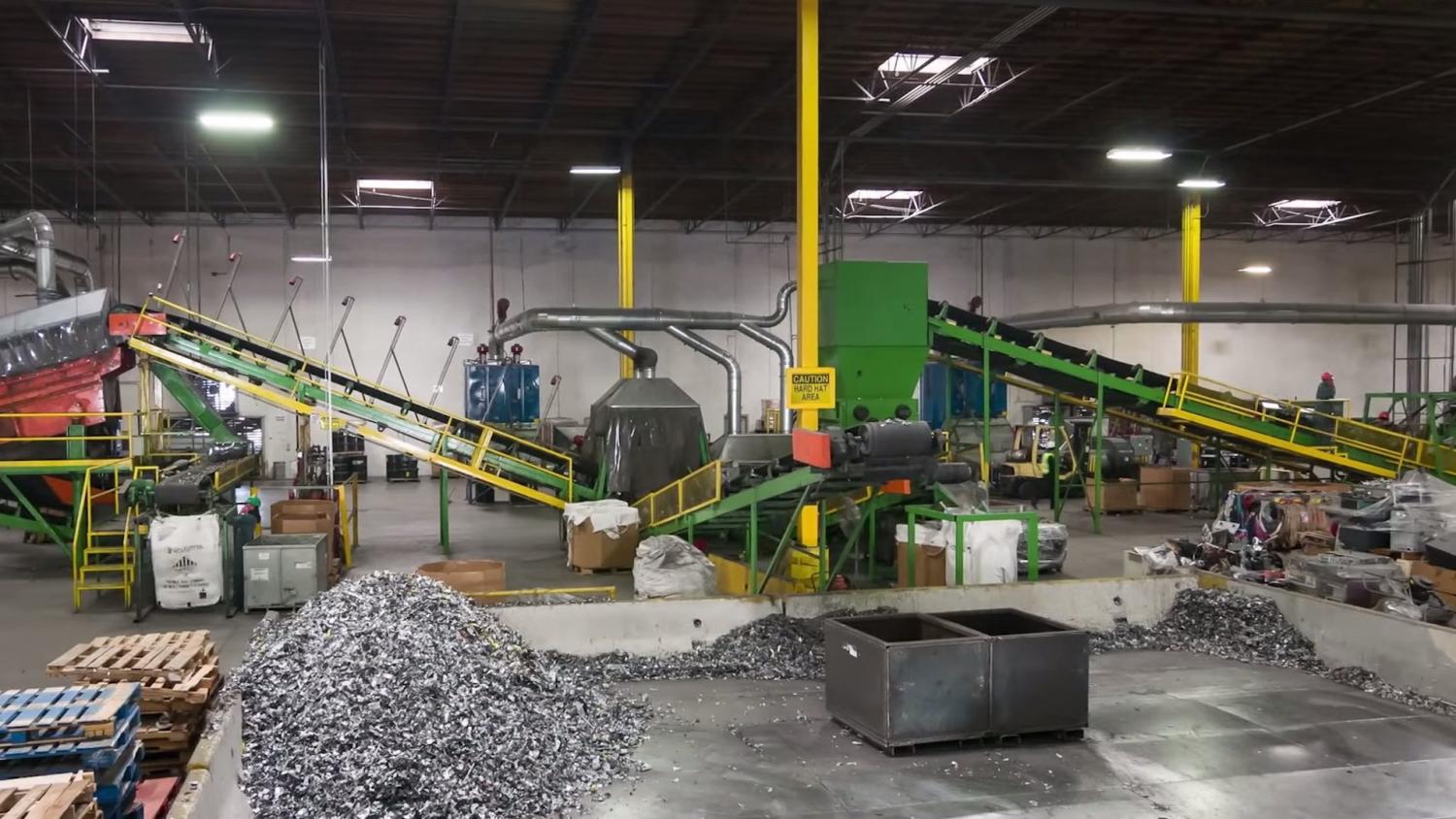

By John Shegerian, Chairman and CEO, Electronic Recyclers International
Electronic waste, also known as “e-waste,” is the fastest growing waste stream in the world, with tens of millions of tons of devices, gadgets and appliances being thrown out on a yearly basis. Spurred by increasing consumer demand for the newest technologies – be they tablets, smart watches, laptops, cell phones, etc. – and the shortening life spans of these various devices, e-waste is unsurprisingly piling up in landfills both domestically and abroad at an alarming rate.
The rising e-waste crisis has prompted a growing number of individuals to ask: What are consumers to do with their electronic devices once they’ve broken down or been rendered obsolete? Should they shove them in the back of a closet? Or do they throw them out with the trash? What is the responsible thing to do?
The simple answer: Consumers should – and must - recycle them. Our electronic devices contain highly valuable metals. In fact, according to the U.S. Environmental Protection Agency (EPA), for every 1 million cell phones recycled, we recoup 5,274 pounds of copper, 772 pounds of silver, 75 pounds of gold and 33 pounds of palladium. And that’s only cell phones. Unfortunately, more often than not, our electronic devices do not even get a second life in the burgeoning circular economy. Instead, they are sent to landfills or exported, oftentimes illegally.
A recent study from the United Nations reported 41.8 million tons of electronic waste were discarded in 2014, with up to 90 percent of this figure estimated to be illegally traded, exported or dumped - sometimes domestically. These practices put your security, the environment and local communities at risk.
The careless disposal of electronics endangers the data security and privacy of consumers. When electronic devices are thrown into landfills or exported illegally, the opportunities for hackers to obtain sensitive information, including credit card, Social Security and bank account numbers, only increases. What is done next with this information consumers typically only find out about once it’s too late.
E-waste, particularly when irresponsibly disposed of, is also a health threat. Electronics contain numerous toxins, such as cadmium, mercury and lead, that when tossed in a landfill can leach into the ground, contaminating water sources and threatening communities as well as endangering the health of workers when improperly handled.
Such dangers underline the importance of adopting responsible recycling practices to best safeguard our personal and national digital security and the health of our environment and communities. The challenge we face, then, as an industry and as a society is how to reach consumers to remedy this lack of awareness, increase recycling rates nationwide and engage every organization, individual and business in the circular economy.
This begins with education. It begins with empowering consumers to take charge of their current and future electronic waste. Our most powerful allies in this mission are our local governments – both city and state - manufacturers and retailers, i.e. the entities that play a role in the lifespan of our devices, from sourcing to end-of-life. Through partnering with recyclers, government agencies, manufacturers and retailers can not only disseminate information on green electronics but also create programs that make recycling electronic devices as easy and straightforward as purchasing them.
Best Buy and Staples are two excellent examples of what retailers can do to help consumers recycle their e-waste with ease. This includes offering buy-back and mail-in programs, as well as collection events. As a manufacturer, Dell has prioritized closing the loop, partnering with Goodwill to offer free e-waste drop-off to consumers and setting new standards for the amount of recycled plastic that must be used at minimum in new electronic devices.
An increasing number of local governments are also taking notice of the e-waste littering their landfills. New York City’s e-cycle NYC program is a successful example of how cities can tackle this issue. Electronic Recyclers International's partnership with e-cycleNYC has provided more than 1 million NYC residents with e-waste pick-up and recycling - at no charge to taxpayers. This type of program and its ongoing success, in conjunction with New York City’s recently passed law that bans the disposal of electronic devices in the trash, serves as a workable model for cities globally seeking to fight the rapidly growing e-waste stream and the threat it poses to residents’ security and the environment.
But consumers do not need to wait for businesses or local governments before taking action. One of the easiest and most effective steps consumers can take is to focus on their current devices’ end-of-life. Once an electronic device breaks, is upgraded or otherwise rendered obsolete, consumers can lessen, if not eradicate, the environmental and data risk posed by improper disposal of these devices by partnering with electronic recyclers that are dual-certified by e-Stewards and R2.
The Basel Action Network’s (BAN’s) e-Stewards Standard is an accredited, third-party audited certification program supported by the EPA and endorsed by Greenpeace USA, the Sierra Club, the Natural Resources Defense Council (NRDC), the Electronics TakeBack Coalition and 68 other environmental organizations. Established in 2009, the e-Stewards Standard calls for certified members to halt the export of hazardous e-waste and the illegal dumping of such waste in landfills or incinerators. The R2 certification, which was introduced in 2008, outlines the general principles and specific practices electronic recyclers must meet and follow in regards to environmental, worker health and safety and security, as well as for any electronics exported for refurbishment and recycling. Both of these standards maintain strict data security standards to ensure sensitive information and privacy is safeguarded.
By understanding these certifications, businesses and consumers can take greater control of the end-of-life processes for their own devices, protect their data security and prevent environmental harm of the local and global community, signaling to larger entities that it is time for everyone to be held to the highest of standards.
Anything else is unacceptable.
John Shegerian is Chairman and CEO of Electronic Recyclers International (ERI), the nation’s leading recycler of electronic waste and the world's largest cybersecurity-focused hardware destruction company. ERI is e-Stewards and R2-certified to de-manufacture and recycle every type of electronic waste in an environmentally friendly manner. ERI processes more than 275 million pounds of electronic waste annually at eight locations, serving every zip code in the United States. For more information about e-waste recycling and ERI, call 1-800-ERI-DIRECT or visit www.electronicrecyclers.com.
Ladies and Gentlemen, ThredUP has Cracked the Sizzle Problem
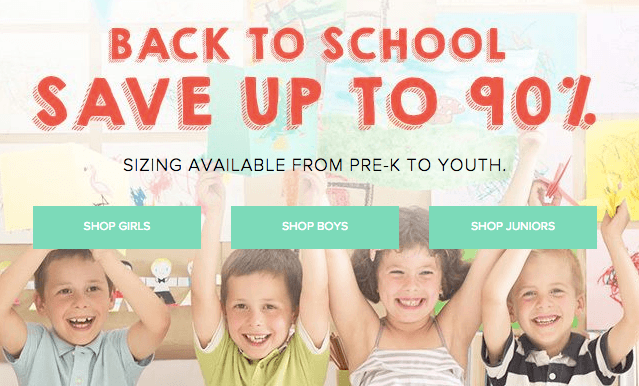

Let's play word association. Thrift shop: dust mites, B.O., bad lighting. And that's me, sustainability evangelist, spokesperson for the triple bottom line, associating. I still buy used, but we can all agree it isn't always the most pleasant shopping experience. Meanwhile, traditional e-commerce giants are breaking bones to get access to your holy dollar. Amazon lets me order baby wipes with two-day free shipping. The Gap lets me get a close-up on those skinny jeans, turn them around for a 360 view and read reviews from buyers like me. Zappos follows me around the Web tempting me with images of sparkly toddler shoes I chose for a close-up. It's very easy to spend money on the Internet.
Get a bunch of sustainability communications folks in a room, and we'll talk for hours about the sizzle problem. How to make sustainability sexy. That is to say, how to make the behavior changes we need to make into behavior changes we want to make. Sustainable communications expert Freya Williams just wrote a whole book on this very subject.
ThredUP, a sustainable startup we've been tracking since 2011, has cracked the sizzle challenge. And it's been quite a journey -- this isn't a company that fears a pivot. It started as a peer-to-peer marketplace for men's and women's clothes, shifted to higher-volume kids' clothes, eliminated the peer-to-peer element in favor of consignment, and are now a straight-up marketplace for used women's and kids' clothing. But there are plenty of re-sellers out there. What makes this one a standout is it's sizzle factor.
Beautiful, professional photos
Online shopping is just so darn easy -- with a click of the mouse or a swipe of the finger, products are on the way to your door. Traditional e-commerce has this pretty well locked down, but it remains a challenge for sustainable sellers.
Beautiful photos inspire shoppers, and ThredUP has them in spades. With high-resolution images, customers can get a feel for fabric and cut, and the photos instill trust when it comes to buying used. Good photography and positioning can actually transform smelly old thrift-store pieces into one-of-a-kind collectibles.
Help with sizing
One of the challenges with online shopping for used clothing is the wide variation in sizing between brands. ThredUP takes the mystery out of sizing by using your size in a known entity (say, a 6 in Banana Republic) and converting it into equivalent sizes in other brands.
But what truly impressed me about this e-commerce site was what happened after I poked around and left.
Back for round two
Fifteen minutes after I checked out ThredUP without buying anything, I received an email, with the subject line "Thank You." We all get a lot of email, and you know as well as I do how difficult it can be to break through the noise. This one, "from" founder James Reinhart did just that. Now, I'm sure this email goes out to everyone, but the tone is so personal:
It was so heartfelt that I decided to reply. And when I offered my feedback, I became invested. And I also went back to the website to double-check my impressions, and wouldn't you know I found a couple of adorable things for me and a couple for my daughter when I looked more closely. This email might be the most brilliant piece of email marketing I've seen all year.
As I added these treasures to my cart, I saw the discounts rise, 50 percent, 60 percent, 70 percent, 80 percent, percent off retail. I saved over $800?!
I know, I know, spending to save isn't *real* savings, but it certainly hits the delight button.
The delight didn't end there. After I clicked purchase, I received an expected email confirmation and a call-to-action, since I was officially a convert. But when I opened it, I was impressed yet again. ThredUP had turned my clothes, the ones I just bought, into a piece of beautiful affiliate marketing:
The psychological impact is powerful. These used clothes are put on a pedestal, reminding me of my good taste and shopping prowess -- I'd be crazy to keep this a secret. And so I shared.
The delights continued. My clothes arrived a few days later in a beautiful polka-dot box, carefully wrapped in tissue paper like they'd come from a department store. The quality was as-described and better.
ThredUP closes the deal with free shipping and free returns (for store credit), making it easy to take a risk on a new style.
These guys have cracked the code, and I can't stop thinking about it.
A transformation
Raz Godelnik told us in 2013 about ThredUP's pivot from peer-to-peer to consignment:
"ThredUP had a very clear choice to make. Either it continues to act as a great community service with little chance to succeed as a business, or it needed to make a change in its business model, putting business before community."
This little startup is all grown up (to the tune of $23 million in Series D funding last year). Growing up may mean a bit less of that feel-good community early adopters love, and it may mean being more particular about the used clothes it accepts in order to maintain high quality. But at the end of the day, any company that can make sustainable purchasing irresistible to consumers gets an A+ from me.
Interested in checking them out? Click here for $20 off your first order.
Image credits: 1) ThredUP 2) and 3) Screenshots
Sprint Introduces Paper Bills Made from Wheat Straw
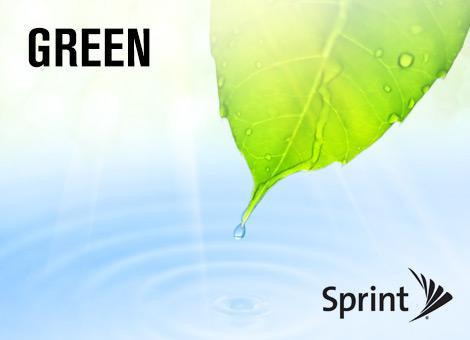

If you are a Sprint customer, this month your statement might be printed on a tree-based paper alternative. Sprint is piloting a new type of paper for its customer mailings that is made from a wheat straw byproduct. The pilot program marks the first time wheat straw paper has been used for customer correspondence in the U.S.
The wheat straw paper is made by Prairie Paper and called Step Forward Paper. It looks the same as tree-based paper, but it’s more sustainable. In other words, it contains very little material made from trees. The Step Forward Paper is made from 80 percent wheat straw byproduct and 20 percent FSC-certified paper from tree-based pulp.
To learn more about the company’s groundbreaking use of wheat straw byproduct-based paper, I talked to Keanon Swan, manager of strategic partner relationships and postal alliances for Sprint.
TriplePundit: Can you give me an overview of Sprint’s use of paper derived from wheat straw byproduct?
Keanon Swan: We continue our ambitious and innovative efforts to mitigate our impact of paper use. This is exploratory. We're looking at highlighting the Step Forward product with about 2.5 million customer letters starting in August.
3p: What prompted this pilot?
KS: Going back as far as 2012, we launched our ecoEnvelope, a two-in-one reusable envelope that reduces paper use. At the same time, we were exposed to agricultural residue as a potential paper product. So, we began exploring it then, but we needed time to allow the ecoEnvelope to be in production, and that worked successfully.
We got it right after the next innovative solution, and that was wheat straw. We began doing some investigation research into it and then some testing. That lead us last year to test a small portion of the wheat straw. Those tests were promising, and we just took the leap and scheduled the production volumes to be delivered in August.
3p: What are the environmental advantages of using paper made from wheat straw byproduct?
KS: We understand the Step Forward product -- the wheat straw product, in particular -- requires 65 percent less land area to produce a ton of paper on an annual basis compared to virgin tree-based paper, and about 50 percent less land area than paper with 30 percent recycled content. Those numbers are intriguing to us.
3p: Are there cost saving savings associated with it?
KS: Currently, the product costs the same as a 30 percent post-consumer waste product. If we order the same quantities, we would see price parity with our virgin product.
3p: What would the farmer typically do with the wheat straw?
KS: It's wheat stubble, and ordinarily the farmer would plow it under or burn it. When you're talking about a farm with hundreds of thousands of acres, it adds up very quickly. There’s no shortage of content.
3p: Are there any other companies that are using wheat straw to make paper?
KS: Prairie Paper's Step Forward product is available through Staples. But we are the first to put it in a roll form and use it in a high-volume, transactional print environment. We're taking it from the flat reams of paper into these 1,000- or 2,000-pound roll and using it in high-speed printing and insertion equipment to manufacture our printed bills and statement. In this case, we're using it for statements to do a live test to see how that performs in market. I'm not aware of anyone else using the product. What I understand from Step Forward, we're the first ever to use it in this application. We just like to think we can get beyond some of the traditional barriers in the print mail space.
Image credit: Sprint
Ingersoll Rand Takes Climate Change Seriously


Climate change is a very real threat to life as we know it. Reducing greenhouse gas emissions is the key to avoiding the worst impact of climate change. The business world can play a key part in reducing emissions. That’s something Ingersoll Rand, an Irish global diversified industrial company, knows all about.
It’s clear that Ingersoll Rand takes climate change seriously. Last year, the company went public with its commitment to reduce the greenhouse gas footprint of its operations by 35 percent by 2020.
Ingersoll Rand made other commitments as well, reducing the greenhouse gas refrigerant footprint of its products by 50 percent by 2020. The company also committed to switching to alternatives with less impact on the climate across its product portfolio by 2030 and investing $500 million in product-related research and development over the next five years.
Ingersoll Rand announced its climate change commitments last September at the 2014 CGI Annual Meeting and United Nations Climate Summit. The commitments, which involve all functions at its operations in over 60 countries, will help the company avoid the amount of carbon dioxide emissions equal to the energy it takes to power almost two million homes for one year. That’s a lot of carbon that will not be released into the atmosphere thanks to one company.
The company is already making progress toward its climate change commitments, as its recently released eighth annual sustainability supplement revealed. Last year, it reduced its GHG emissions by 5.7 percent. From 2010 to 2014, it reduced absolute GHG emissions by 28 percent.
The sustainability supplement highlights steps that the company is taking to make progress. One of those steps is being taken by subsidiary Thermo King, based in Bloomington, Minneapolis which offered transport customers in Europe, the Middle East, and Africa a choice on how and when to reduce their greenhouse gas footprints. The plan includes a new line of trailer and self-powered truck units that are energy efficient and the use of a next-generation refrigerant that is much more environmentally friendly.
Down in Fort Smith, Arkansas, Ingersoll Rand’s residential HVAC manufacturing facility upgraded its lighting system to reduce its carbon footprint while reducing energy costs. The plant replaced existing lighting with fluorescent fixtures, which are more energy efficient. The upgrades resulted in an over $210,000 energy rebate, the largest one issued by a utility company in Arkansas. In other words, being environmentally friendly and caring about climate change saves money.
Why does Ingersoll Rand care so much about climate change? The answer lies in a statement made in its sustainability supplement: “We believe that making responsible use of Earth’s limited resources and reducing our GHG emissions is integral to achieving operational excellence.”
Yes, indeed. Reducing GHG emissions should be an integral part of any company’s bottom line--the triple bottom line.
Image credit: Flickr/DieselDemon
Air Pollution in China is Killing More Than a Million People a Year
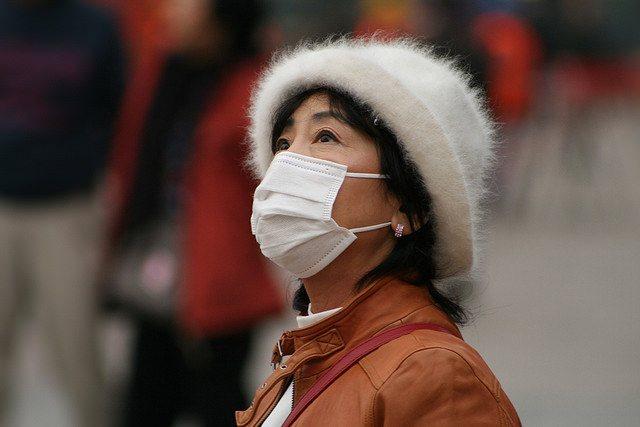

There can be no question that the epic story of our time is our struggle to endure against the threatening demons of our own creation. In that story, China must be the sleeping giant. As the story opens, the giant awakens, searching for a way to improve the livelihood of his people, inadvertently trampling on a number of the Earth’s delicate structures in doing so. Realizing this, a second awakening occurs. But can the giant change direction quickly enough, before too much harm is done?
The damage that re-directed the giant was the realization that fossil fuel emissions, particularly from coal-fired power plants, are pushing atmospheric carbon levels to dangerously high levels. China’s emissions have grown 7 percent annually -- far faster than the rest of the world, which is growing at 2.8 percent. Now that we all realize that emissions have to start decreasing, fast, China has pledged to achieve peak emissions by 2030, after which its emissions will begin to decrease.
But another harm, more immediate and more deadly, has appeared on the scene. Air pollution levels in China have reached catastrophic proportions. According to research newly published by Berkeley Earth, air pollution kills more than 4,000 people every day in China. That’s 1.6 million people per year, a full 17 percent of deaths from all causes. This is a terrible tragedy. As much as 38 percent of China’s population live in a situation where the air quality is considered “unhealthy” by U.S. standards, based on ground-level measurements. The study maps this pollution in unprecedented detail.
The biggest culprit is particulate matter, known as PM 2.5, which refers to the size of the particles in microns. According to the U.S. EPA, PM 2.5 consists of multiple species including ammonium sulfate, ammonium nitrate, carbon and crustal materials, which are primarily soil and ash. PM 2.5 is the smallest particle size the EPA tracks, and it is the most dangerous because of its ability to penetrate the lungs and enter the bloodstream. Associated medical issues include: “decreased lung function, increased respiratory symptoms, cardiac arrythmias (heartbeat irregularities), heart attacks, hospital admissions or emergency room visits for heart or lung disease, and premature death.”
Often these particles travel long distances. This means the people being exposed are not always the ones responsible for the emissions. Beijing, for example, receives much of its pollution from industrial cities like Shijiazhuang, which is 200 miles to the southwest. The Berkeley team found that the Chinese PM 2.5 pollution levels matched those of sulfur, indicated that they originated from coal. But, that also means that efforts like those of Beijing’s mayor, who a year ago banned all coal burning in the city, will not be enough. It’s a systemic problem and must be dealt with accordingly.
"Air pollution is the greatest environmental disaster in the world today," says Richard Muller, scientific director of Berkeley Earth, coauthor of the paper. "When I was last in Beijing, pollution was at the hazardous level; every hour of exposure reduced my life expectancy by 20 minutes. It's as if every man, women, and child smoked 1.5 cigarettes each hour," he said.
According to the study authors, “worldwide air pollution kills over three million people per year – more than AIDS, malaria, diabetes or tuberculosis.”
The study found average levels of PM 2.5 in the 50 to 60 range per cubic meter of air. Compare that with the U.S., where the average levels are in the 10 to 15 range and the highest peaks, which occur in Southern California in the winter, barely reach the mid-20s.
The good news in all of this is that one solution addresses both problems: Get off of coal and switch to clean renewable fuels — the sooner the better.
Image credit: Berkeley Earth via PR Newswire
Featured image: Flickr/Global Panorama